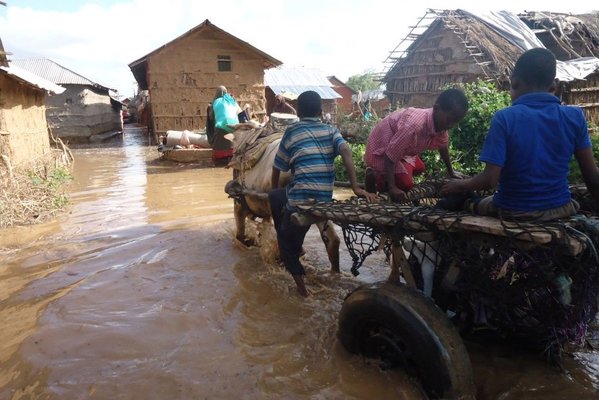Recent floods damage supply routes, vital infrastructure in Somalia, UN relief wing warns

The floods caused by recent heavy rainfalls in South Central Somalia have led to an interruption of humanitarian aid delivery, an escalation of local commodity prices, and an epidemic in water-borne diseases, the United Nations relief wing has warned in the latest situation update on the country.
“There is need to urgently repair main lifeline roads, bridges and airstrips. This will ensure supplies can reach the markets to stabilize the escalating food prices and enable humanitarian partners and aid supplies to reach those most in need of assistance,” stressed the latest humanitarian update issued by the UN Office for the Coordination of Humanitarian Affairs (OCHA), which warns that even as the rains have slowed, the risk of flooding remains high.
Despite the worsening road situation, OCHA and relief partners are ramping up efforts to reach people in the flood-hit areas. For example, emergency relief and food such as high energy biscuits and cooked meals are being delivered to those displaced in South Central Somalia.
Moreover, water-borne diseases, such as Acute Watery Diarrhoea (AWD) and cholera, have spiked in more than 2/3 of the South Central regions as a result of current rains and flash floods. Chlorine and hygiene kits, as well as essential drugs are either already distributed or being delivered to the outbreak-affected communities. Some water wells in affected locations will also be chlorinated for disinfection, according to OCHA.
“Disaster risk reduction therefore becomes an important element in protecting against secondary hazards and supporting durable solutions,” report also mentioned, while underscoring the significance of avoiding longer-term disruption of life caused by shorter-term displacement due to flooding or drought.
About 60,000 people have been internally displaced in South Central Somalia due to floods since the beginning of the rainy season, with Middle Shabelle accounting for the highest number, with more than 11,000 people displaced, mostly in Jowhar, Mahaday and Balcad districts.